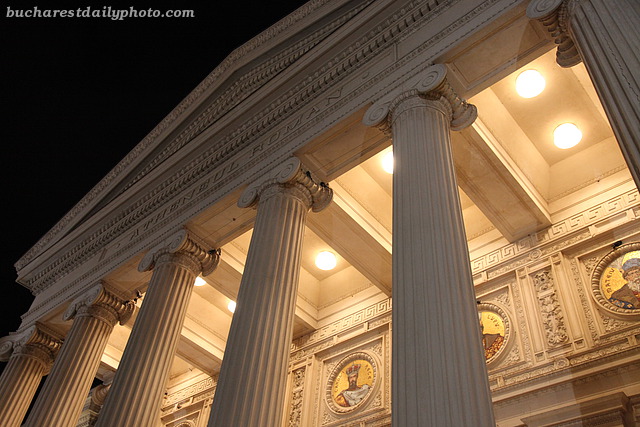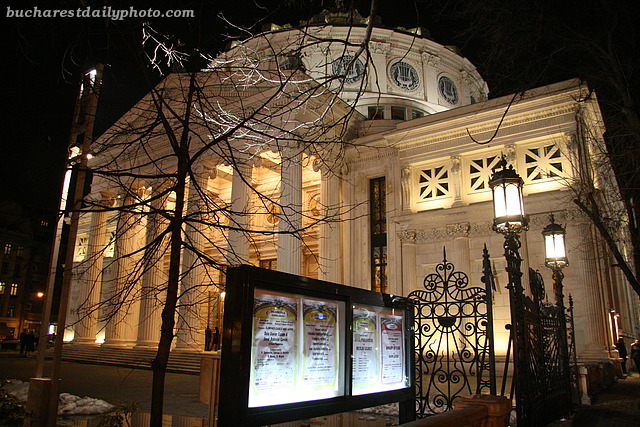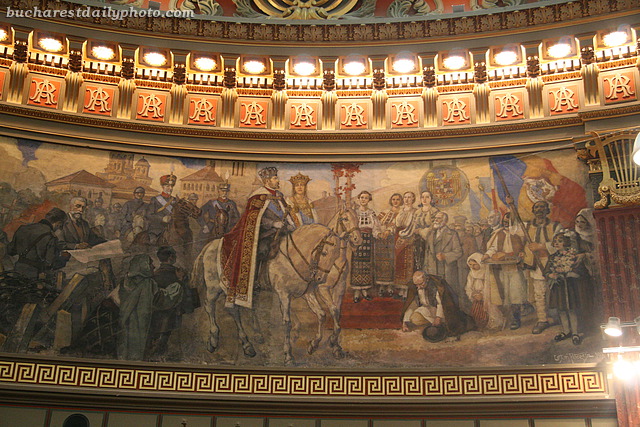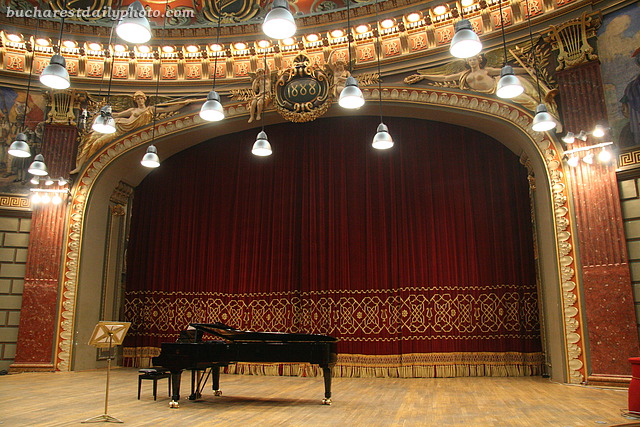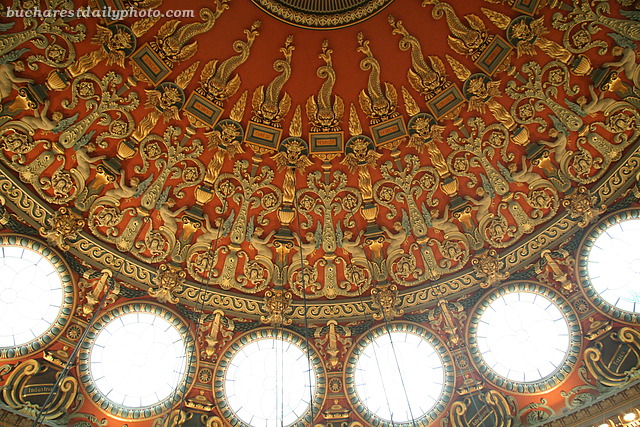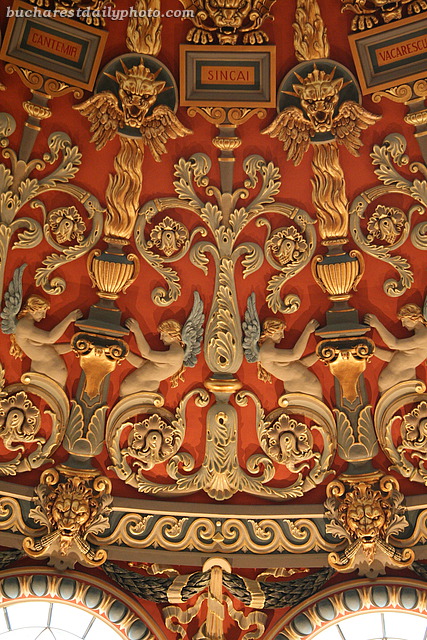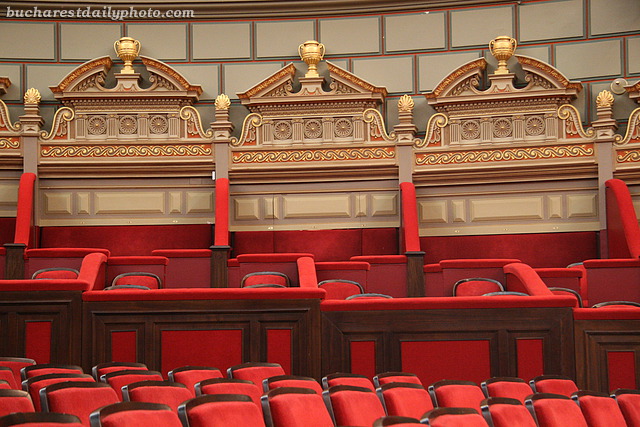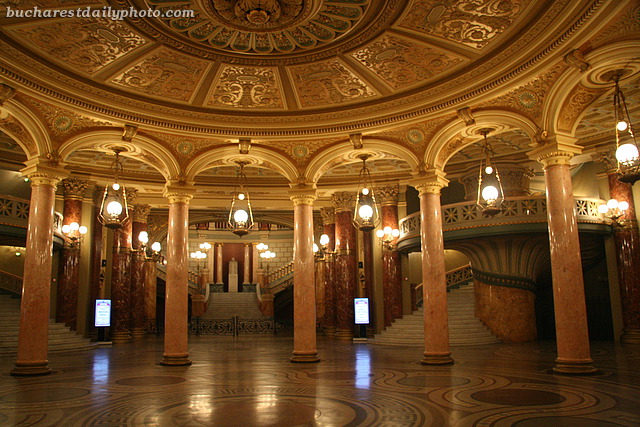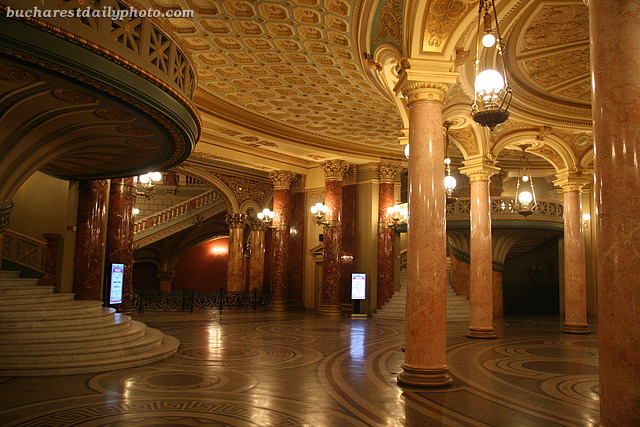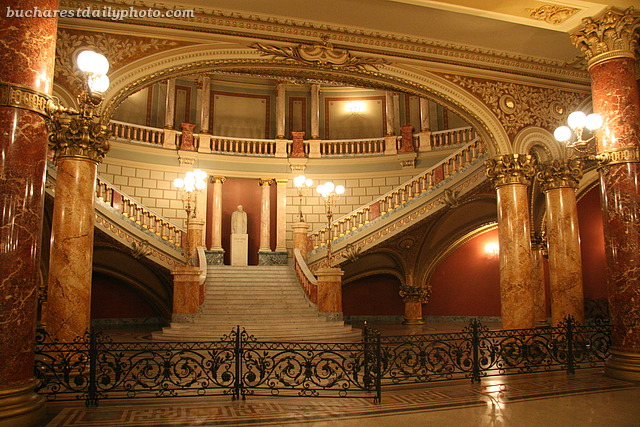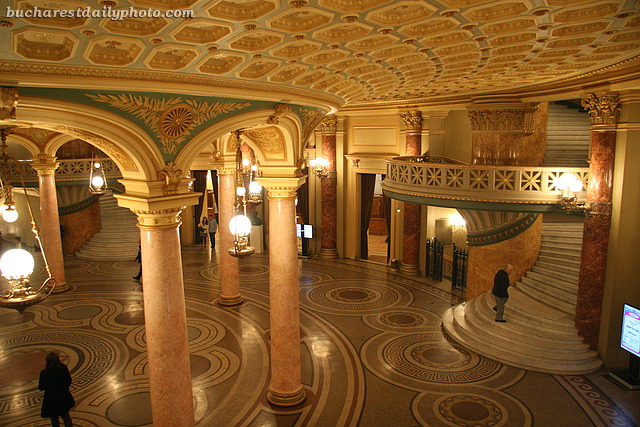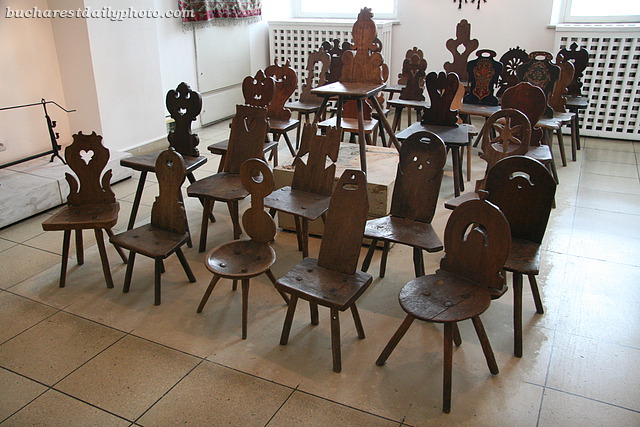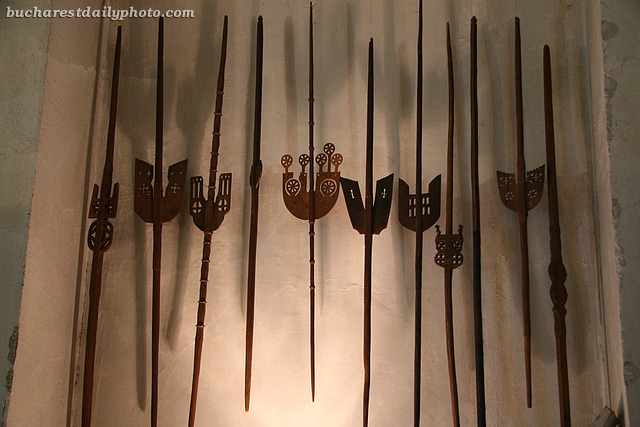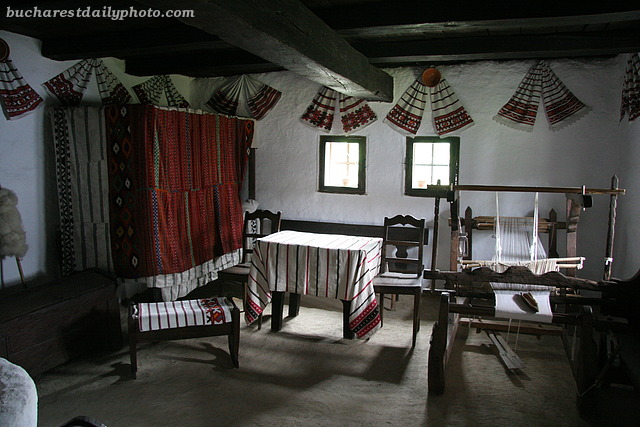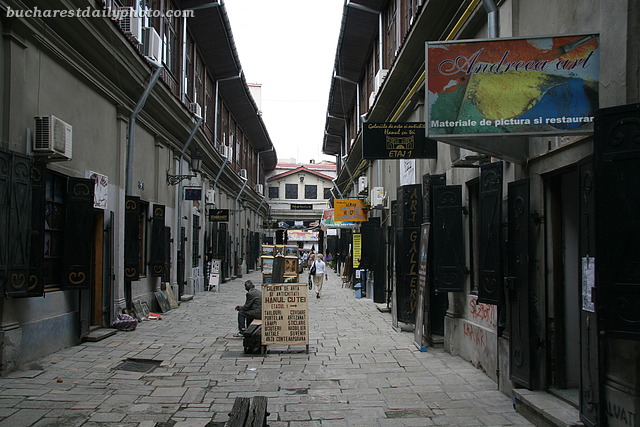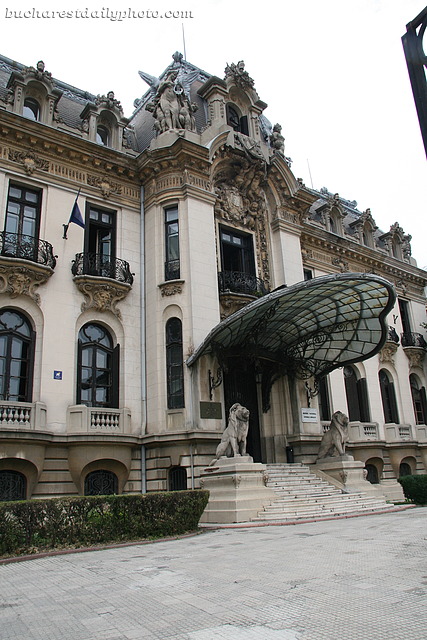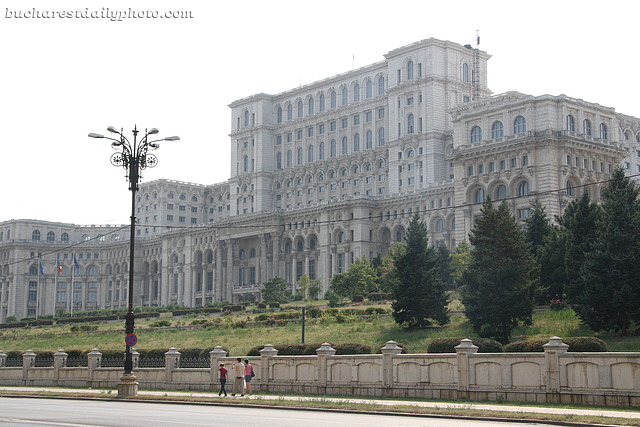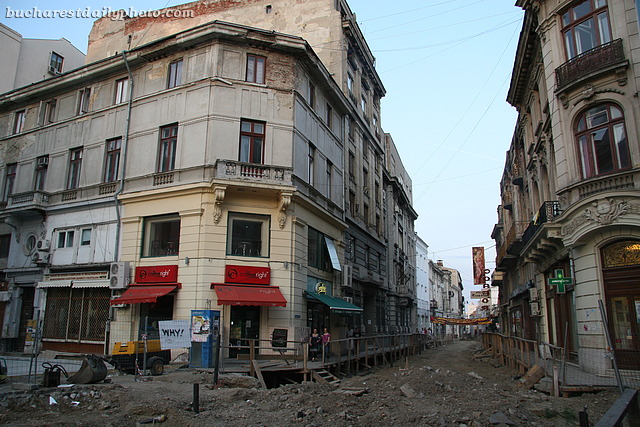The Romanian Atheneum from a new angle.
Finally, a last shot (for a while) of the Athenaeum, all lit up and ready for the show.
For today a few photos from the Athenaeum’s concert hall. It has a circular shape, 600 seats and 52 loggias. The circular wall is decorate with a fresco freeze showing moments from Romanian history which was painted in 1933-1938 by Costin Petrescu. The hall has excellent acoustics.
Last week I’ve showed you the inside of the National Opera and today I’m following up with another cultural venue, more precisely with photos showing the inside of the Romanian Athenaeum. The Athenaeum is one of my favorite buildings of Bucharest. I think of it as something representing Bucharest, a bit like the Eiffel Tower defines Paris. Unfortunately I’m probably alone in my thinking, as most people identify Bucharest with the larger than life Palace of Parliament (and who knows… they may be right). Today’s photos show the main lobby of the Athenaeum whose central part is supported by 12 columns. The main auditorium is located above this lobby and to get there you have to climb one of the four marble stairs open to the public. There’s also a fifth central stair which is probably reserved for special occasions.
Today is Theme Day at the City Daily Photo community, a monthly event that happens the first day of every month, when all participating blogs will post a picture that relates to the theme day’s description. Today’s theme is: Wood. Click here to view thumbnails for all participants
If you feel tired after walking through the Museum of Romanian Peasant for an hour, you might feel inclined to sit down on the chairs shown in the photograph above. This wouldn’t be advisable, as you might end up being chased around by the army of attendants, who as you can see from the photograph below, have all different kinds of weapons at their disposal 🙂
Your tour of the Village Museum will not be complete if you don’t visit the interiors of the houses. Some houses are furnished, fully equipped and nicely decorated with folk art and handicrafts.
And since I mentioned The Linden Tree Inn (Hanul cu Tei in Romanian) yesterday, I decided to tell you a few more words about it and post a picture of the inner courtyard. Bucharest was once full of places like this one, where travelers could enjoy a meal and a drink and secure shelter for the night. Unfortunately many of the old inns have dissapearead or are in ruin. Even though The Linden Tree Inn changed its destination and today it houses an art gallery, you can still get a feel of the 19th century atmosphere. The inner courtyard links Lipscani street with Blănari street. For a bit of history, it was built in 1833-1834 by two merchants, Anastasie Hagi Gheorghe Polizu and Ştefan Popovici. Each one of them had 14 shops on one side of the courtyard. Nowadays the ground floor is home to many art galleries selling paintings and antiques, art supplies stores and a cellar bar. The upper floor is worked in wood and covered by glass pannels as was typical at the time. It was restored between the years 1969-1973.
Just so you don’t think that Bucharest is only made up of communist architecture, dangling cables and graffiti I decided that the time has come for me to post another postcard picture. This is Cantacuzino Palace, located on Calea Victoriei, designed by the architect I.D.Berindei in French Baroque style and built between the years 1899-1902. The facade is dominated by the main entrance; above it there is a giant shell-shaped porte-cochere and two stone lions guard the stairs and the door. George Enescu – Romania’s most famous composer – lived here for a while. The building belonged to his wife Maria Cantacuzino. In fact Enescu preferred a life of simplicity and he and his wife chose to live in a smaller town house that previously housed the administrative staff of the palace; this house is located behind the main palace. Nowadays the palace houses the George Enescu Museum which displays the musician’s manuscripts, scores of his compositions and personal belongings like one of his first violins. I still remember the impression it made on me when I saw the building for the first time. I think I was about ten when my aunt took me and my cousin on a stroll on Calea Victoriei. I thought that this must be the most beautiful building in the world 🙂
This is the first time I’m taking part in Theme Day of the City Daily Photo community. Theme Day is a monthly event that happens the first day of every month, when all participating blogs will post a picture that relates to the theme day’s description. Today’s theme is Big. Click here to view thumbnails for all participants
I decided for a straighforward treatment of this theme and just photographed the biggest thing I could find in my city. I don’t know if you’ve heard but Bucharest holds the dubious record of having the biggest Parliament building in the world, which is also the second largest administrative building in the world after the Pentagon. It truly is as big as a dictator’s ego. Bucharest’s Palace of Parliament was built during the Ceauşescu’s regime and it was designed as the seat of his political power. He also intended to use the building as his personal residence. Construction began in 1984 and at the time of Ceauşescu’s death in 1989 it was not completely finished. He never got to move in.
The Palace of Parliament was and still is a controversial building. Some people think of it as shameful, an architectural horror while others are proud of its records and consider it the biggest tourist attraction in Bucharest. I tend to side with those who don’t like the building, which in my eyes represents the peak of Ceausescu’s megalomania. Many old beautiful buildings were demolished to make way for this pointlessly massive “house” (Parliament’s Palace used to be called The House of the People during the communist regime). To quote wikipedia, “much of Bucharest’s historic district, including 19 Orthodox Christian churches, six Jewish synagogues, three Protestant churches (plus eight relocated churches), and 30,000 residences” were demolished to create the space necessary for this project. I remember a joke that was going around at the time: the boulevard that ends with the Parliament Palace was to be called “The Victory of Socialism”. The joke’s punchline was that in fact the name of the boulevard is “The Victory of Socialism against Bucharest”.
Unfortunatelly I read somewhere that this building is indeed the biggest tourist attraction in Bucharest. Seems like people like records of this sort. I visited the building once, when they opened it for public in 1990; I remember some huge rooms, the dimensions being so excessive that nothing else was noticeable. Today the building houses the Romanian Parliament, as well as the National Museum of Contemporary Art (MNAC) opened in 2004 inside the west wing. It can be visited by guided tours.
Bucharest’s Old Town, also called Lipscani area or Historical Centre, is what was left after the former communist dictator Ceausescu finished the work done by the allied bombings of 1944. And what’s left – around 300 historical houses, a few churches and the remains of the old palace and court of Vlad Ţepeş (1459-1462) – is unfortunatelly for the most part managed by Bucharest’s City Hall which has spent years delaying the most needed restorations. Old Town was Bucharest’s merchant area starting with the middle of the 17th century until the middle of the 20th century when the owners were arrested by the communists and the houses were taken over by the Gypsies. The Gypsies didn’t take good care of the buildings so the houses slowly degraded. Nowadays some of the owners or their heirs came back to reclaim the properties but some are still disputed and degrading still. Some of the buildings have been restored and are now functioning as restaurants, cafes or shops as on Smârdan Street. Finally, in 2006 the City Hall chose a Spanish company to start rebuilding the infrastructure in the Historical Center but early this year the project was stopped due to a quarrel between the City Hall and the contractor. A few streets are already restored but most of them are pretty difficult to walk as they were dug up for the planned street repairs. I’ve heard many people say that this area has great potential and it could transform into something unique in Europe. It seems like the City Hall achieved this already. It is indeed unique to walk along rudimentary wooden planks in the center of an European capital.
